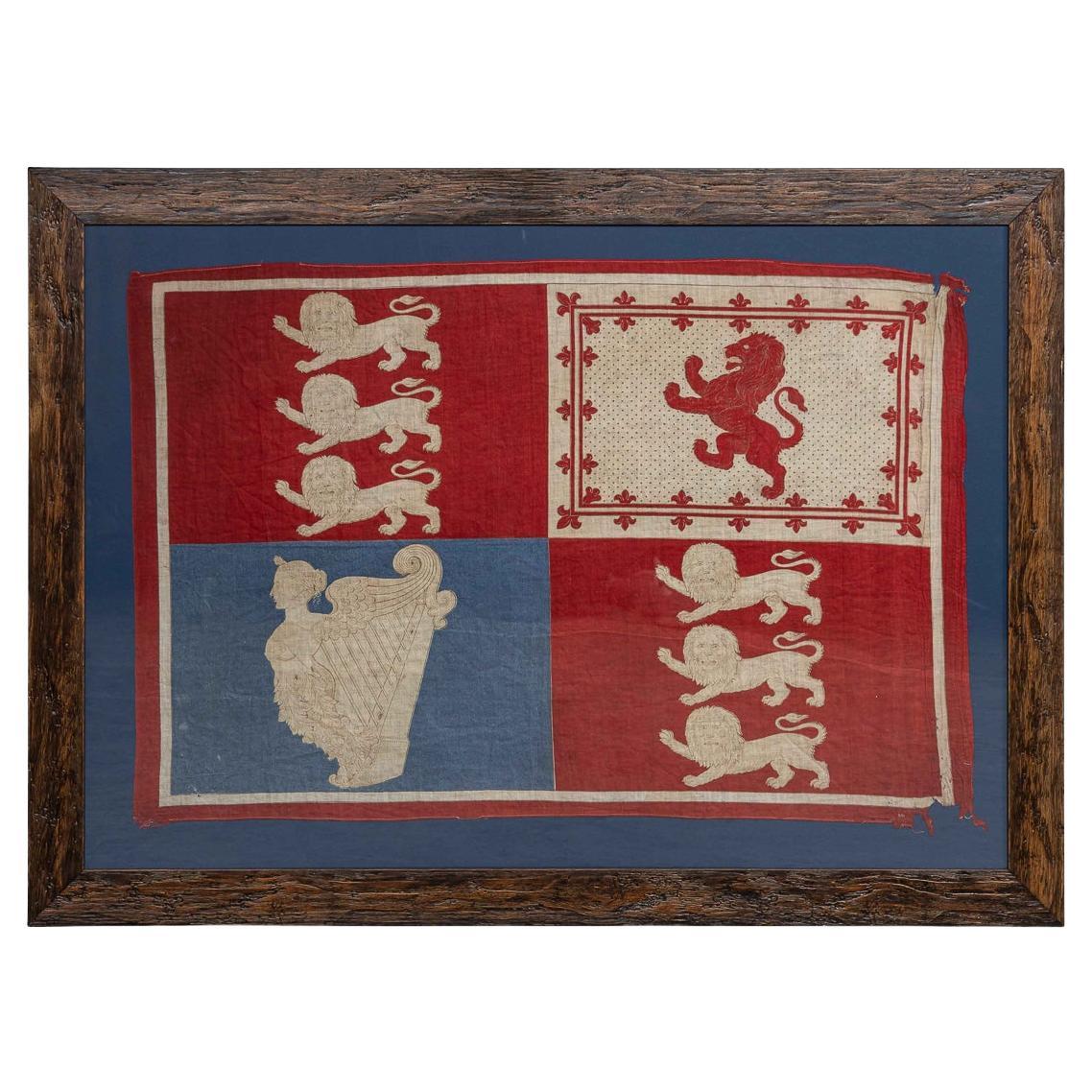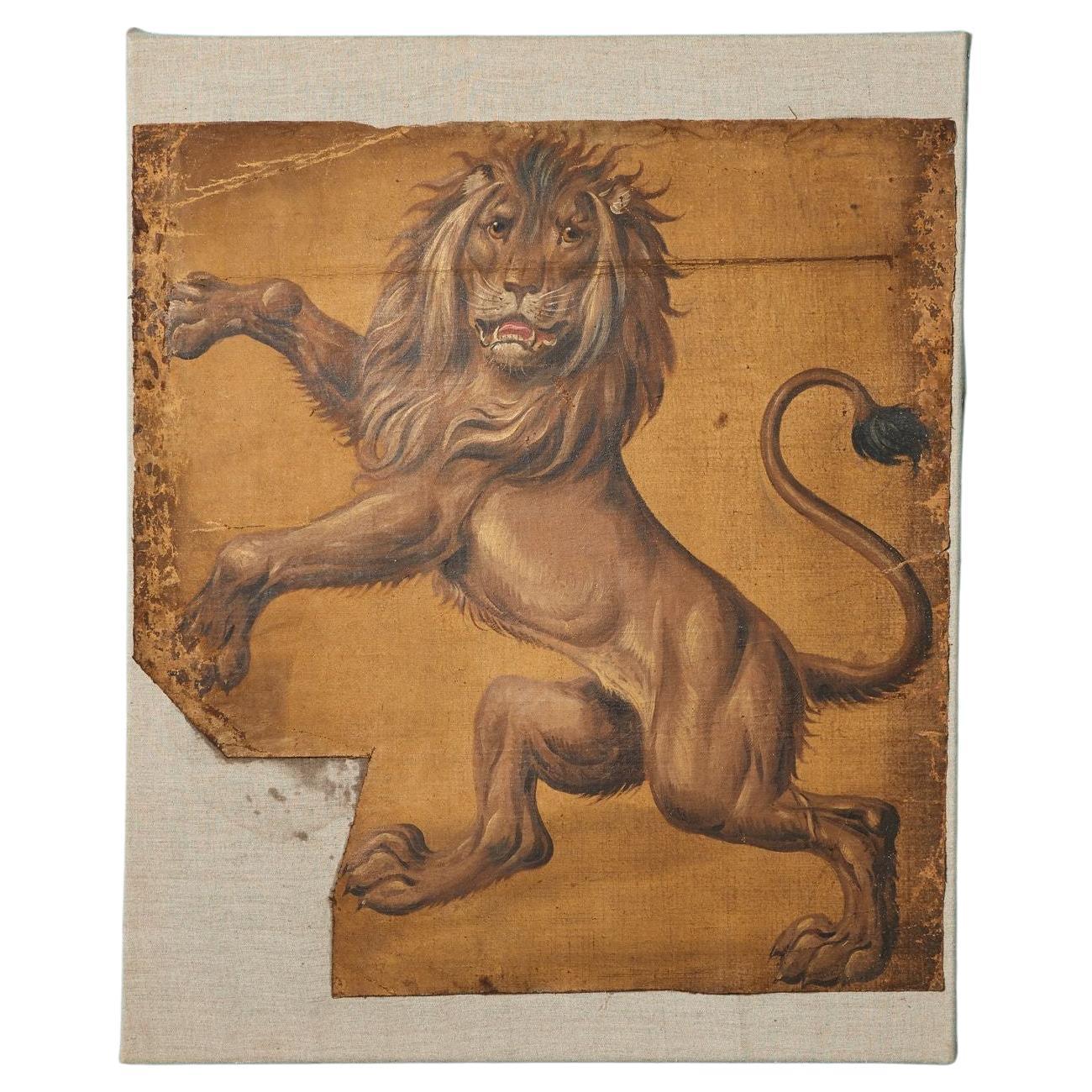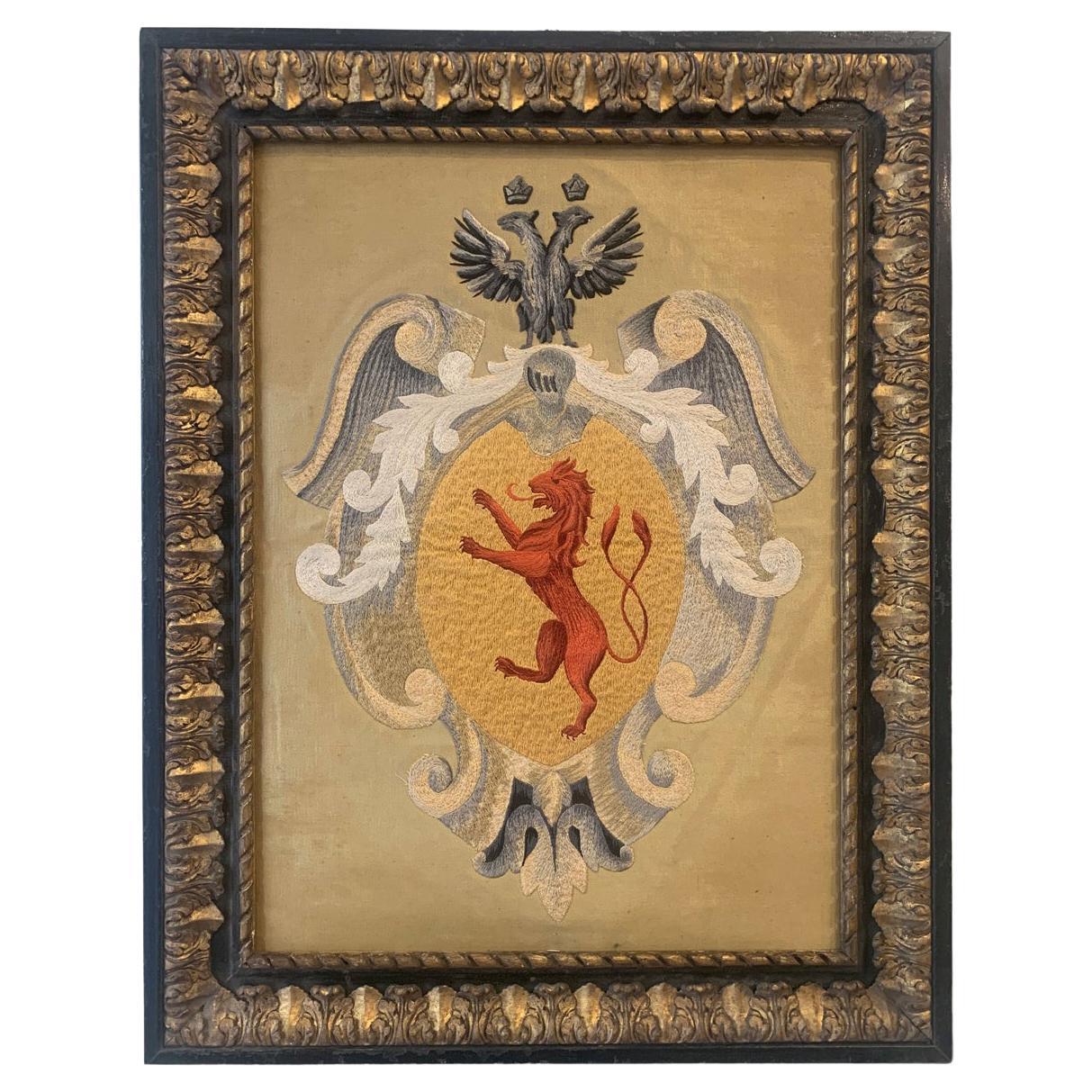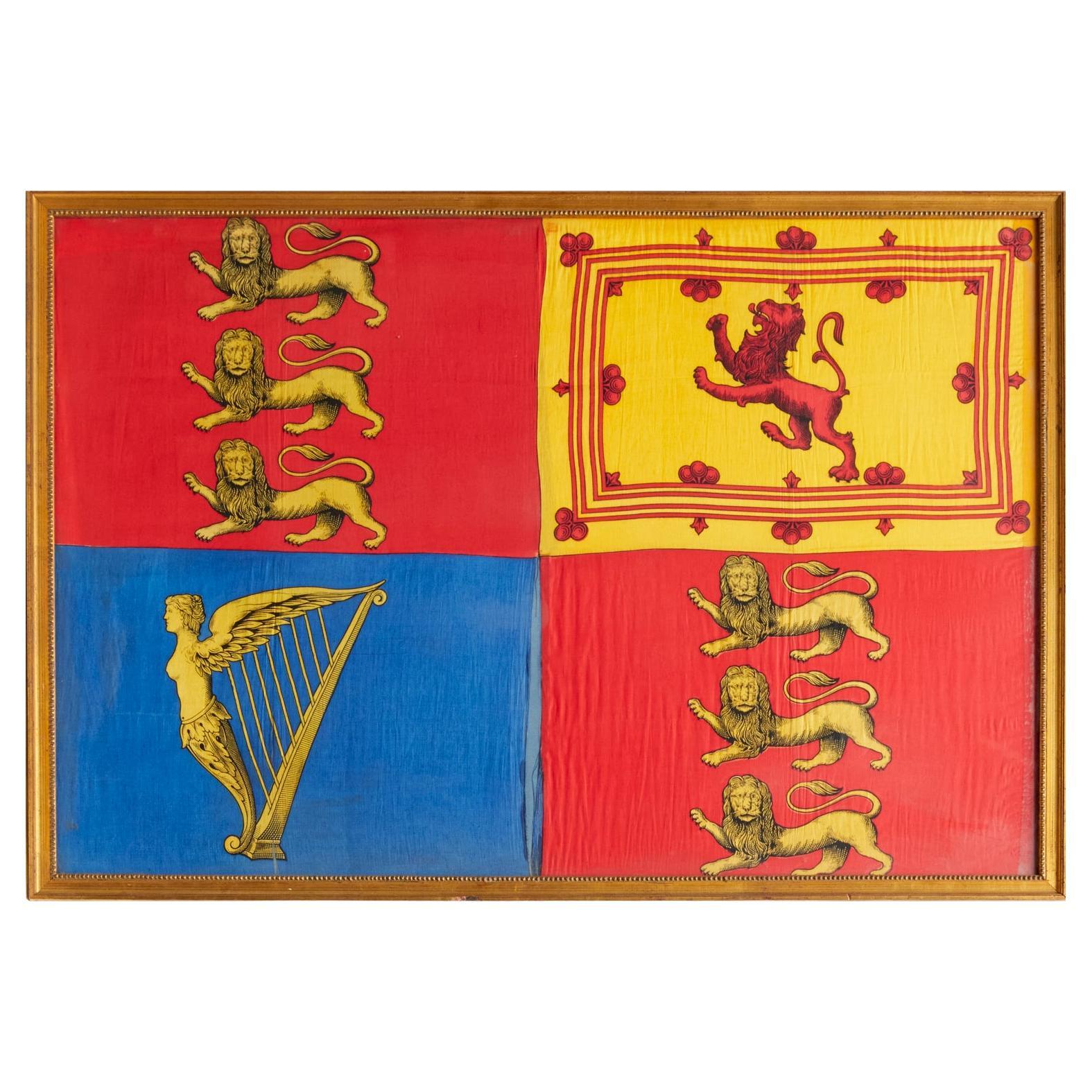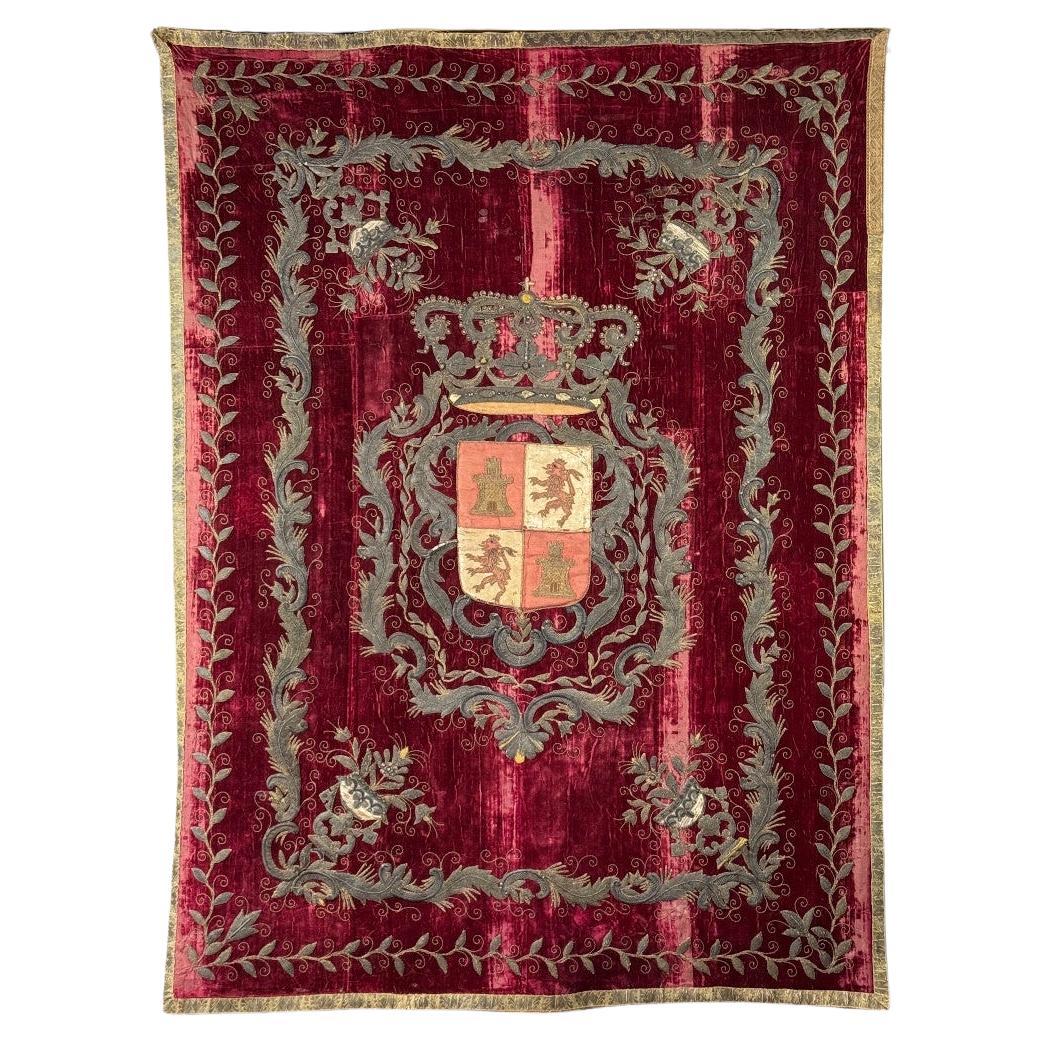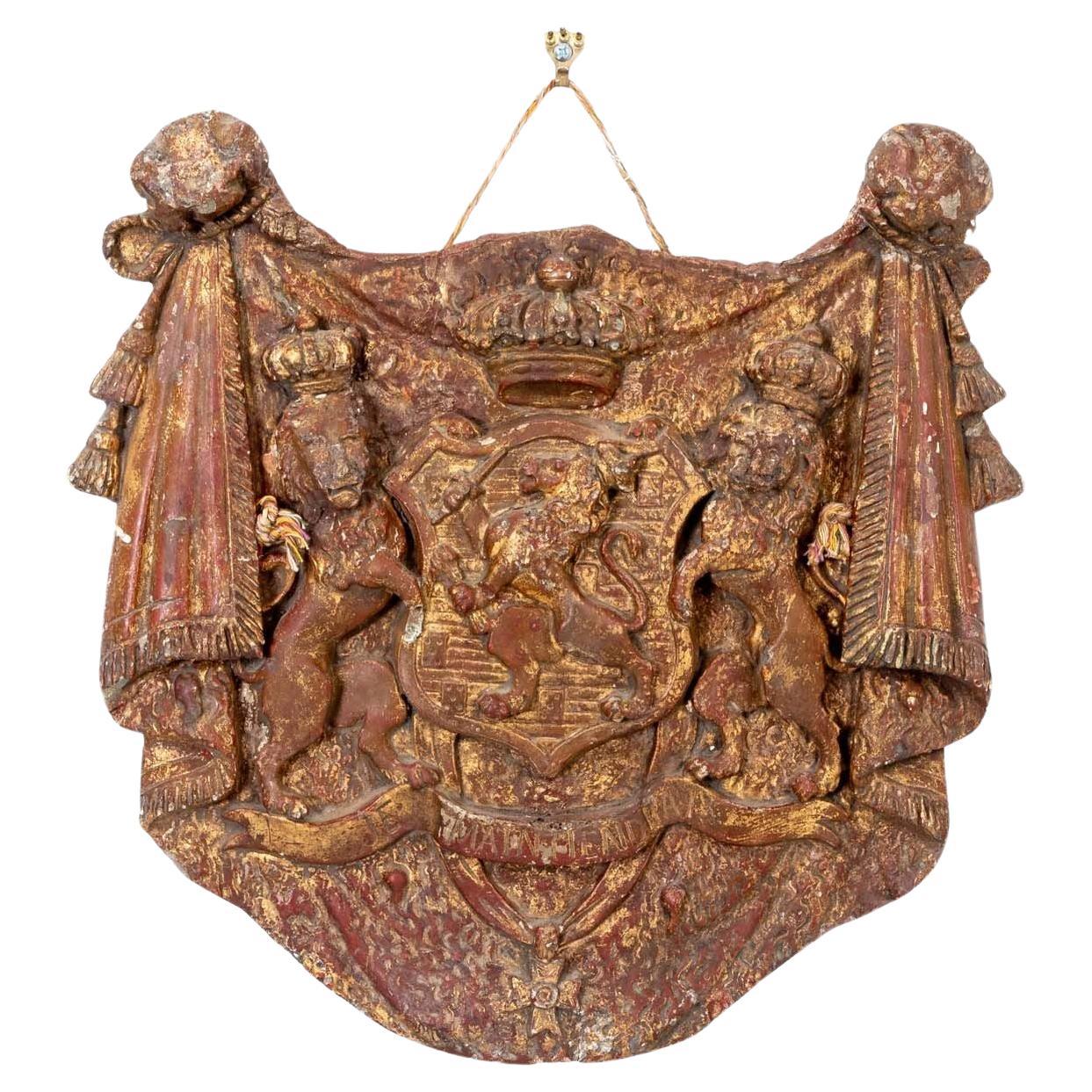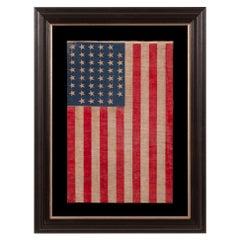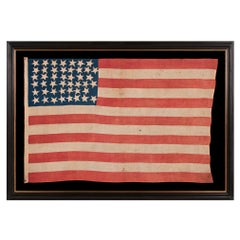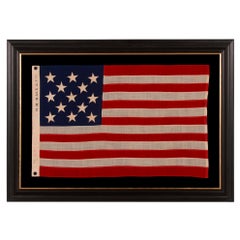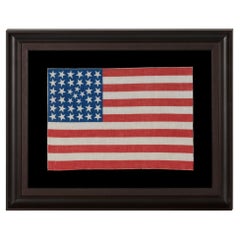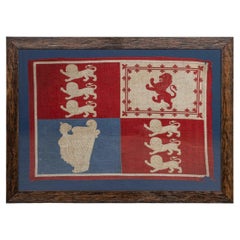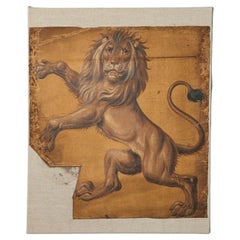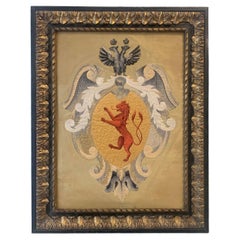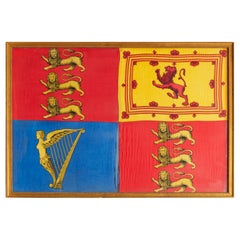Items Similar to "Lion Rampant" Royal Flag of Scotland, ca 1875-1900
Want more images or videos?
Request additional images or videos from the seller
1 of 6
"Lion Rampant" Royal Flag of Scotland, ca 1875-1900
Price Upon Request
Price Upon Request
Price Upon Request
Price Upon Request
Price Upon Request
Price Upon Request
Price Upon Request
Price Upon Request
Price Upon Request
Price Upon Request
Shipping
Retrieving quote...The 1stDibs Promise:
Authenticity Guarantee,
Money-Back Guarantee,
24-Hour Cancellation
About the Item
THE ROYAL FLAG OF SCOTLAND, a.k.a., “LION RAMPANT,” A GLAZED COTTON PARADE FLAG, LAST QUARTER 19th CENTURY
Parade flag in the form of the Royal Flag of Scotland, printed on coarse, glazed cotton. Made during the last quarter of the 19th century, this is an especially early example among flags in this style that one might encounter in private hands, likely produced for use at a World’s Fair event, the likes of which rose to great popularity in that era.
Scotland has long had two flags, a royal standard, to represent the crown, and a national flag. The latter depicts a white saltire, a.k.a., the Cross of St. Andrew, on a blue field. Popularly depicted in modern times in what may be best described as a medium shade of sky or perhaps Prussian blue, there was, in fact, no specified shade until 2003. Said to have first appeared during the Dark Ages (5th – 10th centuries, 400 – 900 A.D.) some claim this to be the earliest of all European flags in present day use, though the earliest actual illustration survives in a circa 1542 Register of Scottish Arms by Sir David Lyndsay of the Mount, Lyon King of Arms.
The Royal Standard of Scotland, a.k.a., the ‘Lion Rampant of Scotland’ or the ‘Banner of the King of Scots,’ has represented the Royal Kingdom of Scotland within the Scottish an then British monarchy (following the 1603 uniting of the crowns by James VI) since the same general period. The use of the Rampant Lion originated during the reign of Malcolm III (1058–1093), with its first recorded use as the national symbol in 1222, roughly two decades later, by Alexander II and with the double border appearing shortly thereafter, under Alexander III (1249–1286). Post 1603, the design was incorporated into the Royal Standard of the United Kingdom, where it remains today.
Although the display of the Rampant Lion is theoretically limited to the crown and a key list of officials identified as “Great Officers of the State, in 1935 George V officially sanctioned its use by private citizens, in the form of hand-held parade flags, at celebrations held to celebrate the 25th anniversary of his monarchy (the Silver Jubilee of George V). Use at patriotic events thereafter became tradition. Today this is easily the most widely displayed flag of Scotland, where it appears in massive numbers at sporting events.
The flag displays beautifully, retaining some of its original glazing, and is a wonderful example of the late 19th century.
Mounting: For more than 25 years we have maintained a specialized department for this purpose. Our lead conservator holds a master's degree in textile conservation from one of the nation’s top university programs. We take great care in the mounting and preservation of flags and related textiles and have preserved thousands of examples.
The background is 100% cotton twill, black in color, that has been washed and treated for colorfastness. The mount was placed in a deep, cove-shaped molding with a very dark brown surface, nearly black, with a rope-style inner lip, to which a light gold molding with a slightly beveled profile and a frosted surface was added as a liner. The glazing is U.V. protective acrylic (Plexiglas). Feel free to contact us for more details.
Condition: There is moderate fading of the saffron yellow ground, accompanied by some misprint and fading of the red pigment in limited areas. There is minor to modest soiling at both the hoist (right as displayed here) and fly (right) ends. There are instances of thin streaks of dark staining running diagonally along the fly, in addition to some black transfer or staining adjacent to the lower and hoist end borders, in the bottom, hoist end quadrant. There are pinprick-sized holes along the hoist, where the flag was once affixed to a wooden staff, and very minor losses and fraying along the top and bottom edges. Many of my clients prefer early flags to show their age and history of use.
Frame Size (H x L): Approx. 36" x 49"
Flag Size (H x L): 24" x 36.75
- Dimensions:Height: 36 in (91.44 cm)Width: 49 in (124.46 cm)Depth: 2.5 in (6.35 cm)
- Materials and Techniques:
- Place of Origin:
- Period:
- Date of Manufacture:1875-1900
- Condition:See Item Description.
- Seller Location:York County, PA
- Reference Number:Seller: ofj-8891stDibs: LU849744146472
About the Seller
5.0
Recognized Seller
These prestigious sellers are industry leaders and represent the highest echelon for item quality and design.
Established in 1991
1stDibs seller since 2008
70 sales on 1stDibs
Typical response time: 1 to 2 days
- ShippingRetrieving quote...Shipping from: York County, PA
- Return Policy
Authenticity Guarantee
In the unlikely event there’s an issue with an item’s authenticity, contact us within 1 year for a full refund. DetailsMoney-Back Guarantee
If your item is not as described, is damaged in transit, or does not arrive, contact us within 7 days for a full refund. Details24-Hour Cancellation
You have a 24-hour grace period in which to reconsider your purchase, with no questions asked.Vetted Professional Sellers
Our world-class sellers must adhere to strict standards for service and quality, maintaining the integrity of our listings.Price-Match Guarantee
If you find that a seller listed the same item for a lower price elsewhere, we’ll match it.Trusted Global Delivery
Our best-in-class carrier network provides specialized shipping options worldwide, including custom delivery.More From This Seller
View All45 Stars Antique American Parade Flag, Utah Statehood, ca 1896-1908
Located in York County, PA
45 STAR ANTIQUE AMERICAN PARADE FLAG WITH ITS STARS ARRANGED IN A NOTCHED PATTERN, 1896-1908, UTAH STATEHOOD:
45 star American national flag, printed on coarse, glazed cotton. Evide...
Category
Antique 1890s American Political and Patriotic Memorabilia
Materials
Cotton
Price Upon Request
Homemade, Antique American Flag with Exceptional Folk Qualities, 1896-1908
Located in York County, PA
HOMEMADE, ANTIQUE AMERICAN FLAG WITH A TINY CANTON RESTING ON THE 6TH STRIPE AND AN EXTREMELY FOLKY PRESENTATION OF 45 STARS IN A “NOTCHED” PATTERN THAT MIGHT BE UNIQUE TO THIS EXAMP...
Category
Antique 1890s American Political and Patriotic Memorabilia
Materials
Cotton
13 Star Antique American Flag, Marked "R.H Macy & Co", circa 1895-1926
Located in York County, PA
13 STAR ANTIQUE AMERICAN FLAG WITH A 3-2-3-2-3 CONFIGURATION OF STARS; A SMALL-SCALE EXAMPLE, MADE IN THE 1895-1926 ERA, MARKED “R.H. MACY & CO.”
13 star antique American flag of th...
Category
Antique Late 19th Century American Political and Patriotic Memorabilia
Materials
Wool
Price Upon Request
38 Star Antique American Parade Flag, Colorado Statehood, ca 1876-1889
Located in York County, PA
38 STARS IN AN EXTREMELY UNUSUAL CONFIGURATION THAT BEARS A CLUSTER OF 6 SMALL STARS WITHIN A LINEAL PATTERN OF LARGER STARS, 1876-1889, COLORADO STATEHOOD
38 star American national parade flag, printed on cotton. This is an extremely rare example of a lineal pattern flag with a wreath or cluster of smaller stars inserted in the center. A very small number of flags in this style are known to have survived, the colors of which are typically saturated and vibrant, like this example, in scarlet red and rich, royal blue.
The particular wreath in the center of the configuration is really more of a pentagon with a single, center star. The reason for the choice of the design and 6 smaller stars seems a curious one on the surface, but its purpose was probably nothing more than to simply augment a 36 star print block to one with 38 stars. One may observe how 4 stars, that would have comprised the center of a 6 x 6 pattern, could have simply been removed and 6 smaller stars inserted in their place, in an artful fashion.
At least two other similar 38-star patterns are known that incorporate 4 small stars intermingled between rows of what most certainly were two very similar 34-star flag print blocks originally. It was easier to modify these blocks rather than create brand new ones. In these particular instances, the results are rare, quirky configurations that are highly prized by collectors.
Colorado became the 38th state on August 1st, 1876. This was the year of our nation’s 100-year anniversary of independence. Per the Third Flag Act of 1818, stars were not officially added until the 4th of July following a state's addition. For this reason, 37 was the official star count for the American flag in 1876. Flag-making was a competitive venture, however, and few flag-makers would have been continuing to produce 37 star flags when their competitors were making 38’s. It is for this reason that 38 and 13 stars (to represent the original 13 colonies) are more often seen at the Centennial International Exposition, the six-month long World’s Fair held in Philadelphia in honor of the event. Some flag-makers would have been adding a star for the 38th state even before it entered the Union, in the early part of 1876 or even prior. In fact, many makers of parade flags were actually producing 39 star flags, in hopeful anticipation of the addition of two more Western Territories instead of one. But the 39th state would not join the Union for another 13 years, when the Dakota Territory entered as two states on the same day. The 38 star flag became official on July 4th, 1877 and was generally used until the addition of the Dakotas in 1889.
Provenance: Jeff R. Bridgman Antiques to the late collector Jim Ring...
Category
Antique Late 19th Century American Political and Patriotic Memorabilia
Materials
Cotton
Price Upon Request
38 Star Antique American Parade Flag, Colorado Statehood, ca 1876-1889
Located in York County, PA
38 STAR ANTIQUE AMERICAN PARADE FLAG WITH JUSTIFIED ROWS OF 7-6-6-6-6-7 AND SCATTERED STAR ORIENTATION, MADE DURING THE PERIOD WHEN COLORADO WAS THE MOST RECENT STATE TO JOIN THE UNION, 1876-1889
38 star American national parade flag, printed on coarse cotton, possibly with flax content. One of the flag’s most interesting features is the wild sweep of the grain of the fabric, the warp and weft of which are anything but perpendicular.
The stars are arranged in justified rows of 7-6-6-6-6-7. This results in a secondary pattern that I commonly call a “box-in-a-box-in-a-box”, because of the way in which the seemingly haphazard arrangement creates three consecutive squares. Note how the stars point in various directions on their vertical axis, which adds a nice element of folk quality to the overall design.
Most parade flags in this star count have red stripes that lean heavily toward orange, with a vibrant, chromatic luster. This was common across printed flags produced between the 1850's and the 38 star period, phasing out in the last decade of the 19th century. Also note how the wear and patina contribute to an endearing presentation that displays its long-term use gracefully.
Colorado became the 38th state on August 1st, 1876. This was the year of our nation’s 100-year anniversary of independence. Per the Third Flag Act of 1818, stars were not officially added until the 4th of July following a state's addition. For this reason, 37 was the official star count for the American flag in 1876. In the latter 19th century, it became common to add stars before the respective state(s) had even entered the Union. No one cared what was official, not even the military, where the matter of practicality with regard to flags always seems to have outweighed regulations. In the private sector, commercial flag-making was a competitive venture. Few flag-makers continued to produce 37 star flags when their competitors had jumped the star count to 38. It is for this reason that 38 and 13 stars (to represent the original 13 colonies) are more often seen at the Centennial International Exposition, the six-month long World’s Fair, held in Philadelphia, that served as the nucleus of the national celebration.
Some makers of printed parade flags actually began to produce 39 star flags in 1876, in hopeful anticipation of the addition of two more Western Territories instead of one. The 39th state would not join the Union for another 13 years, however, when the Dakota Territory—thought to be coming as a single state—entered as two separate states on November 2nd, 1889. The 38 star flag generally fell out of production at that time, though it technically remained official until July 3rd, 1890.
President Ulysses S. Grant was in office when the first 38 star flags would have appeared. The list of presidents that served during the period when the 38 star flag was official include Rutherford B. Hayes, James Garfield...
Category
Antique Late 19th Century American Political and Patriotic Memorabilia
Materials
Cotton
Price Upon Request
30 Star Antique American Parade Flag, Wisconsin Statehood, ca 1848-1850
Located in York County, PA
ANTIQUE AMERICAN PARADE FLAG WITH 30 STARS, THE ONLY KNOWN EXAMPLE IN THIS SIMPLE BUT EXTRAORDINARY STYLE, PRE-CIVIL WAR, OFFICIAL FOR JUST TWO YEARS, REFLECTS THE ADDITION OF WISCON...
Category
Antique Mid-19th Century American Political and Patriotic Memorabilia
Materials
Cotton
Price Upon Request
You May Also Like
Antique 20th Century Victorian Framed Royal Standard Flag c.1900
Located in Royal Tunbridge Wells, Kent
An excellent 20th Century Victorian Royal Standard presented in a reclaimed wood frame. This flag, reserved for the British monarch, features the three lions of England and Wales, th...
Category
20th Century British Other Tapestries
Materials
Fabric, Glass
Heraldic Lion 19th Century Oil Painting on Canvas
Located in Wormelow, Herefordshire
An antique oil on canvas depiction of a Lion in rampant pose. One of four similar panels removed from an English country house.
Category
Antique Late 19th Century Victorian Paintings
Materials
Canvas
Mid-18th Century, Coat of Arms Embroidered on Velvet
Located in Firenze, FI
Silk thread embroidery on velvet applied on a fir tablet depicting the coat of arms of the Sebregondi family, a noble Florentine lineage.
Dating back to the period between 1745 an...
Category
Antique Mid-18th Century Italian Tapestries
Materials
Fabric, Wood
Antique Royal Standard of the United Kingdom in Giltwood Frame and Under Glass
Located in Morristown, NJ
An antique Royal Standard of the United Kingdom, possibly by Benjamin Edgington, London. The fabric is in a giltwood frame under glass. Each of the four quadrants on the flag represe...
Category
Antique 1830s English British Colonial Historical Memorabilia
Materials
Fabric, Glass, Wood
Tapestry bearing the coat of arms of Castile and León, silver thread
Located in Honnelles, WHT
Tapestry bearing the coat of arms of Castile and León, silver thread
Category
Antique Late 18th Century Belgian Louis XIII Drawings
Materials
Wool
English Heraldic Plaque with Lions, Early 20th Century
Located in South Salem, NY
This captivating early 20th Century plaster English heraldic plaque boasts a regal ensemble of crowned lions, a prominent cross, and elegantly draped swags adorned with delicate tass...
Category
Early 20th Century English Wall-mounted Sculptures
Materials
Plaster
